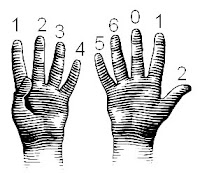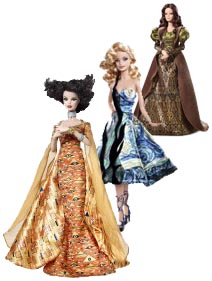Saturday, July 30, 2011
Heads up
Posted by
jim and Mary
at
6:56 AM
![]()
![]()
Labels: flash back
Friday, July 29, 2011
Heart of stone
Posted by
jim and Mary
at
6:57 AM
![]()
![]()
Labels: art in adland
Thursday, July 28, 2011
Water, water everywhere
Posted by
jim and Mary
at
6:56 AM
![]()
![]()
Labels: city gallery, exhibitions, Te papa
Wednesday, July 27, 2011
Spaced out
Posted by
jim and Mary
at
6:40 AM
![]()
![]()
Labels: collecting
Tuesday, July 26, 2011
Peace and love
Posted by
jim and Mary
at
6:54 AM
![]()
![]()
Labels: by the numbers
Monday, July 25, 2011
The can't read and can't write stuff
In the cut
Note: One of OTN's eagle-eyed friends has told us that these paintings were actually painted on pre-prepared canvas boards. Still, you get the picture)
Saturday, July 23, 2011
Friday, July 22, 2011
Don’t look up
Posted by
jim and Mary
at
6:58 AM
![]()
![]()
Labels: copy cat, public sculpture
Thursday, July 21, 2011
Pick and choose
Posted by
jim and Mary
at
6:58 AM
![]()
![]()
Labels: city gallery, collecting, curators
Wednesday, July 20, 2011
Savoir-faire
Posted by
jim and Mary
at
6:59 AM
![]()
![]()
Labels: architecture
Tuesday, July 19, 2011
Drips
Sorry sold out
Posted by
jim and Mary
at
6:59 AM
![]()
![]()
Labels: collectors, dealer gallery
Monday, July 18, 2011
Pass it on
Posted by
jim and Mary
at
11:59 AM
![]()
![]()
Labels: pass it on, tips
An eye for an icon
Posted by
jim and Mary
at
6:57 AM
![]()
![]()
Labels: dawson, public sculpture
Saturday, July 16, 2011
Art in the movies
An oldie but a goodie from LA Story as Steve Martin talks up art.
Posted by
jim and Mary
at
6:48 AM
![]()
![]()
Labels: art in the movies
Friday, July 15, 2011
Big ears
“The artist wants you to bend down and get real close to the work, see the detail, feel the texture.”
“Can we touch it?”
“No.”
“Is this the Wednesday group?”
“No, it’s Tuesday.”
“If you look at the painting real close you can see much more than if you don’t.”
“There’s three more rooms to go.”
“Oh…”
“What does pink mean?”
Thursday, July 14, 2011
Advice to art students
Posted by
jim and Mary
at
11:59 AM
![]()
![]()
Labels: advice to art students, drawing
True Lyes
Posted by
jim and Mary
at
6:04 AM
![]()
![]()
Labels: exhibitions, history, len lye
Wednesday, July 13, 2011
Not fair
So why, you might ask, is this gallery not got a berth at next month’s Art Fair in Auckland? They certainly applied to be included but were apparently told they were too young (that’s in gallery years). Too young? Feels kinda weird in a world where everyone is searching for what's new and interesting. The end result is that the Art Fair will open minus one of Auckland’s liveliest galleries.
And you have to wonder about the 'young-thing' as a criteria. Robert Heald's Wellington gallery opened just six months before HC and quite rightly got the tick from Art Fair bureaucrats.
Posted by
jim and Mary
at
6:56 AM
![]()
![]()
Labels: dealer gallery
Tuesday, July 12, 2011
Above the fold
Posted by
jim and Mary
at
11:52 AM
![]()
![]()
Labels: art school
A long time ago in a galaxy far far away…
Posted by
jim and Mary
at
6:08 AM
![]()
![]()
Labels: art in the movies, auckland art gallery
Monday, July 11, 2011
By the numbers
Saturday, July 09, 2011
Inflation saves the day
Friday, July 08, 2011
Sole mates
Images: Top, Peter Lippmann’s version of James Whistler’s Arrangement in Grey and Black and bottom Whistler’s effort.
Thursday, July 07, 2011
Prints Charming
Posted by
jim and Mary
at
6:54 AM
![]()
![]()
Labels: by the numbers
Wednesday, July 06, 2011
Art on the doll
Tuesday, July 05, 2011
Driven
Monday, July 04, 2011
When you’re in a hole, fill it.
Posted by
jim and Mary
at
4:59 AM
![]()
![]()
Labels: Christchurch quake, installation
Saturday, July 02, 2011
Friday, July 01, 2011
Art at work
Posted by
jim and Mary
at
5:15 AM
![]()
![]()
Labels: installation


















































